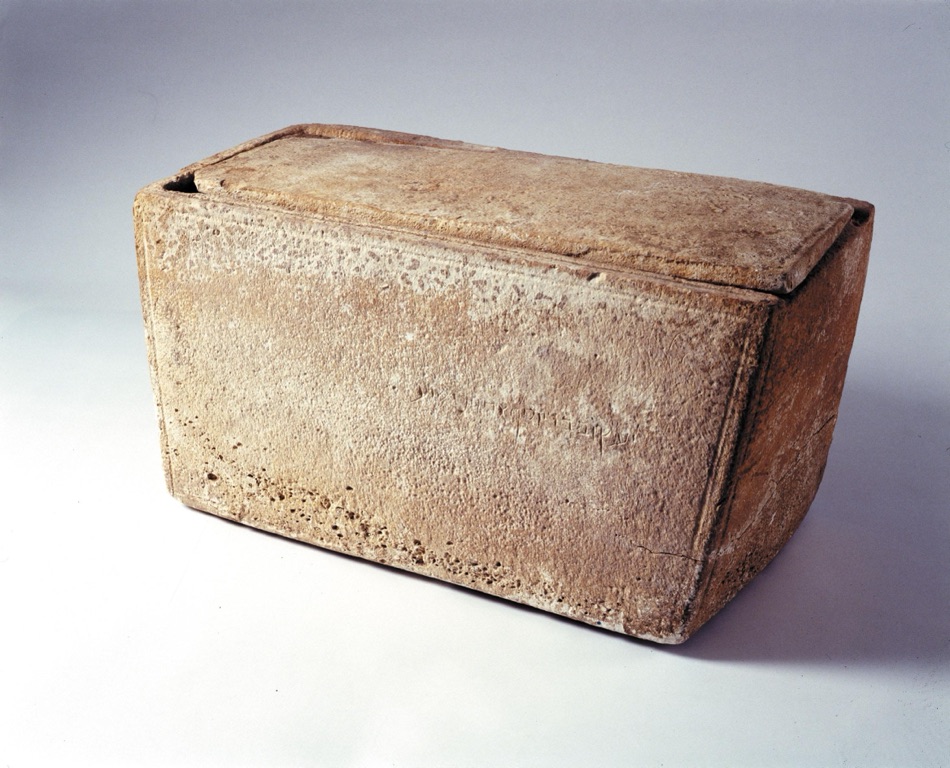The Ossuary of James is a limestone box historically associated with the burial practices of the Jewish people. It gained notoriety for an Aramaic inscription that reads “James, son of Joseph, brother of Jesus.” The artifact’s authenticity and implications have been subjects of intense debate. If genuine, it could be linked to James the Just, a figure of early Christianity. The ossuary’s discovery and subsequent controversies have made it a focal point for discussions on archaeology and biblical history.
Get your dose of History via Email
Historical Background of The Ossuary of James
The Ossuary of James surfaced in the antiquities market in 2002. Oded Golan, an Israeli collector, claimed ownership. The artifact’s origins trace back to the first century CE, a period rich in Jewish history. It was during this time that burial practices included the use of ossuaries for the bones of the deceased.
According to Golan, he acquired the ossuary in the 1970s from an antiquities dealer in Jerusalem. However, the lack of a clear provenance cast doubt on its authenticity. The Israel Antiquities Authority (IAA) examined the ossuary, igniting a scholarly and media firestorm.
The craftsmanship of the ossuary suggests it was the work of skilled artisans of the period. These boxes were common in Jewish burials until the destruction of the Second Temple in 70 CE. The use of ossuaries declined after this event, marking a shift in burial customs.
No evidence suggests that the ossuary was the scene of any historically significant events. However, its inscription, if authentic, connects it to one of the most significant periods in Christian and Jewish history. The ossuary’s link to James the Just, a prominent figure in the New Testament, is the crux of its historical importance.
The IAA charged Golan and others with forgery in 2004, but after a lengthy trial, the court acquitted them in 2012. The judge did not declare the ossuary authentic but stated that the prosecution failed to prove beyond a reasonable doubt that the inscription was forged.
About The Ossuary of James
The Ossuary of James is a small, modest limestone box, typical of first-century Jewish burial practices. Its dimensions are approximately 20.5 inches long, 10 inches wide, and 12 inches high. The limestone material was a common choice for ossuaries of the time.
The box features an Aramaic inscription that is the source of both its fame and controversy. The inscription’s patina, consistent with ancient carvings, initially suggested authenticity. However, later analyses raised questions about the inscription’s newer sections.
The ossuary’s construction is simple, with plain surfaces and no elaborate decorations, which aligns with the Jewish customs of the period. The focus on modesty in burial practices was a reflection of the egalitarian beliefs of the time.
Experts have scrutinized the ossuary’s physical characteristics to determine its authenticity. The box’s patina and weathering patterns have undergone extensive scientific analysis. These studies aimed to verify whether the box and the inscription aged together.
The debate over the ossuary’s authenticity has not diminished its significance as an artifact. Whether or not it belonged to James the Just, the ossuary provides insight into the burial customs and linguistic practices of ancient Jerusalem.
Theories and Interpretations
The primary theory about The Ossuary of James is that it once contained the remains of James the Just. This theory hinges on the interpretation of the inscription and its reference to Jesus. If the inscription is authentic, it could be a rare archaeological link to a New Testament figure.
Some scholars argue that the combination of names—James, Joseph, and Jesus—is not unique enough to confirm the biblical connection. They suggest that these were common names during that period. Thus, the ossuary could belong to another individual with the same name.
Mysteries surrounding the ossuary include the origins of its inscription. Was it added later to increase the artifact’s value? Or is it a genuine find that sheds light on early Christian history? These questions fuel ongoing debates.
Scientific dating has been challenging due to the ossuary’s emergence from the antiquities market rather than a controlled archaeological dig. Techniques such as patina analysis have been employed to assess the age of the inscription relative to the box.
The ossuary’s authenticity remains a hotly contested issue. The lack of conclusive evidence either way means that interpretations of the artifact will continue to evolve as new research and technologies emerge.
At a glance
Country: Israel
Civilization: Jewish
Age: 1st century CE
Conclusion and Sources
Reputable sources used in the creation of this article include:
- Wikipedia: https://en.wikipedia.org/wiki/James_Ossuary

